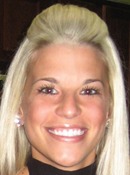Program Information
Neutron Contamination Around a Medical Linear Accelerator Measured with Helium-4 Scintillation Detectors
J Kelley1*, T Zhu2 , L Rolison2 , S Gokhale2, Enqvist2, Das1 , (1) New York University, New York, NY, (2) University of Florida, Gainesville, FL
Presentations
SU-K-205-16 (Sunday, July 30, 2017) 4:00 PM - 6:00 PM Room: 205
Purpose: To quantify the neutron contamination emitted from a linear accelerator using Helium-4 scintillation counters and pulse shape discrimination methods.
Methods: Two He-4 gas scintillation detectors were placed 1 m off the central axis located at isocenter height. The flux of photoneutrons produced in the Varian TrueBeam operating at a nominal energy of 15 MV and dose rate of 600 MU/min were determined using beam-on times of 30 min per measurement. The gantry was rotated to 300° in order to place the detectors close to the x-ray target. The jaws and MLC’s were closed such that the entire radiation beam was effectively blocked. Lead sheets covered the detector active volume to reduce the photon component counted by the scintillators.
Results: Pileup events were identified through a rejection algorithm and removed from the dataset. To obtain a pure neutron count, it was then necessary to identify gamma events in the detector, resulting from the high photon output of the linac. The naturally low gamma interaction probability of He-4 gas (due to its low electron density), combined with the implementation of a pulse shape discrimination algorithm that identifies differences in the shape of the scintillation signals between neutrons and gammas, allowed for the elimination of a large fraction of the measured photon events. The final result was a new and unique measurement of the photoneutron flux.
Conclusion: This work indicates the potential for using active detection methods capable of measuring the fast neutron signal contaminating the MV energy x-ray beams used in radiotherapy. The ability of He-4 scintillators to discriminate the overwhelming signal of photons from the desired neutron counts will allow future work to focus on measuring the fast neutron spectrum as well as the unfolding algorithm used to de-convolve the detector signals.
Funding Support, Disclosures, and Conflict of Interest: This research is funded in part by the Department of Energy Nuclear Energy University Programs and Arktis Radiation Detectors Ltd
Contact Email:
